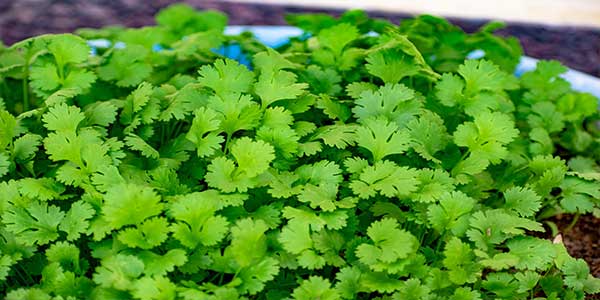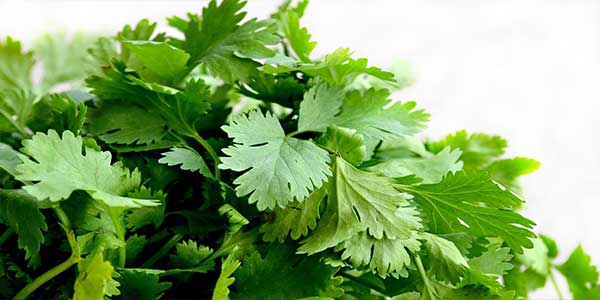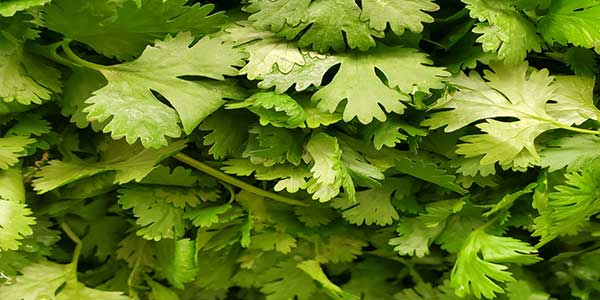Introduction:
Coriander leaves, also known as Hara Dhaniya or cilantro, are a popular herb used in cooking worldwide. They are known for their fresh, citrusy flavor and are a staple in many cuisines, including Indian, Mexican, Middle Eastern, and Southeast Asian. In addition to their culinary uses, coriander leaves offer several health benefits and have a long history of medicinal use. In this comprehensive article, we will explore the uses, qualities, origin, sources, production, applications, health benefits, culinary uses, how to use coriander leaves in cooking, and potential side effects associated with their consumption.
Origin and Sources of Coriander Leaves (Hara Dhaniya):
Coriander leaves have a rich history and can be traced back to the Mediterranean and Middle Eastern regions. They are believed to have originated in the eastern Mediterranean area and have been cultivated for thousands of years. Today, coriander leaves are grown and harvested in various regions around the world, including India, Mexico, China, and the Middle East. They are readily available in grocery stores, farmers’ markets, and can also be easily grown in home gardens.
Qualities of Coriander Leaves (Hara Dhaniya):
Coriander leaves possess several qualities that make them a highly valued herb in cooking. Here are some notable qualities of coriander leaves:
a) Fresh and Citrusy Flavor: Coriander leaves have a distinct fresh and citrusy flavor. They are often described as having a combination of lemony, minty, and slightly peppery notes. This unique flavor profile adds brightness and complexity to dishes.
b) Aromatic and Fragrant: Coriander leaves are highly aromatic and release a pleasant fragrance when crushed or chopped. The aroma of coriander leaves is often used to enhance the overall sensory experience of a dish.
c) Versatile Use: Coriander leaves are incredibly versatile and can be used in both raw and cooked dishes. They are commonly used as a garnish, added to salads, soups, curries, sauces, salsas, and marinades. Coriander leaves are also an essential ingredient in chutneys and pestos.
d) Nutritional Value: Coriander leaves are rich in vitamins A, C, and K, as well as several antioxidants and minerals such as potassium, calcium, and manganese. They are low in calories and provide dietary fiber, making them a healthy addition to a balanced diet.

Production of Coriander Leaves (Hara Dhaniya):
The production of coriander leaves involves cultivating and harvesting the plants. Here’s a brief overview of the production process:
a) Cultivation: Coriander plants thrive in mild to cool climates. They can be grown from seeds in gardens, pots, or farms. The plants require well-drained soil and regular watering to ensure proper growth.
b) Harvesting: Coriander leaves are typically harvested when the plants reach a certain height and the leaves are fully developed. The leaves are hand-picked or trimmed using scissors, allowing the plants to continue growing and producing more leaves.
c) Post-Harvest Handling: After harvesting, the coriander leaves are sorted, washed, and packed to preserve their freshness. They are then distributed to local markets or processing facilities for further distribution.
Uses and Applications of Coriander Leaves (Hara Dhaniya):
Coriander leaves are widely used in cooking and offer a range of culinary applications. Let’s explore some of the primary uses:
a) Culinary Use: Coriander leaves are an essential ingredient in many cuisines. They are used to add flavor and freshness to dishes such as curries, salads, soups, salsas, stir-fries, rice dishes, and marinades. The leaves are often added at the end of cooking or used as a garnish to preserve their vibrant flavor.
b) Chutneys and Pestos: Coriander leaves are a key component in various chutneys and pesto sauces. They are combined with other ingredients such as garlic, ginger, chili peppers, lime juice, and spices to create flavorful accompaniments for snacks, appetizers, and main dishes.
c) Flavoring for Drinks: Coriander leaves can be used to flavor beverages such as herbal teas, cocktails, and infused water. The leaves add a refreshing and aromatic element to the drinks.
d) Pickling: Coriander leaves can be used in pickling solutions to add flavor and aroma to preserved vegetables and fruits. They can be added whole or chopped into the pickling mixture.
e) Condiments and Dressings: Coriander leaves can be blended with other ingredients to create flavorful condiments and dressings. They can be used in salsa verde, green chutney, coriander-mint sauce, and herb-infused oils.

Health Benefits of Coriander Leaves (Hara Dhaniya):
Coriander leaves offer several potential health benefits due to their nutrient content and active compounds. Here are some of the notable health benefits associated with coriander leaves:
a) Digestive Aid: Coriander leaves are known to have digestive properties and can help alleviate digestive discomfort, such as bloating, gas, and indigestion. They may also help stimulate the production of digestive enzymes, promoting healthy digestion.
b) Antioxidant and Anti-inflammatory Properties: Coriander leaves contain antioxidants that help neutralize free radicals and reduce oxidative stress in the body. They also possess anti-inflammatory properties, which may help alleviate inflammation-related conditions.
c) Blood Sugar Regulation: Some studies suggest that coriander leaves may help regulate blood sugar levels. They may have a beneficial effect on insulin secretion and glucose metabolism, making them potentially useful for individuals with diabetes or at risk of developing the condition.
d) Cholesterol Management: Coriander leaves may aid in reducing LDL (bad) cholesterol levels and increasing HDL (good) cholesterol levels. This can contribute to heart health and lower the risk of cardiovascular diseases.
e) Antimicrobial Properties: Coriander leaves possess antimicrobial properties that may help inhibit the growth of certain bacteria and fungi. This can contribute to better oral health and reduce the risk of infections.
Use of Coriander Leaves (Hara Dhaniya) in Cooking:
Using coriander leaves in cooking is simple and adds a fresh and vibrant touch to dishes. Here are some tips to help you use coriander leaves effectively:
a) Freshness: Choose fresh coriander leaves that are bright green and have no signs of wilting or yellowing. Store them in the refrigerator and use them within a few days for the best flavor and texture.
b) Washing: Before using coriander leaves, wash them thoroughly under cold water to remove any dirt or impurities. Gently pat them dry with a paper towel or use a salad spinner to remove excess moisture.
c) Stems and Leaves: Both the stems and leaves of coriander are edible and can be used in cooking. The stems have a milder flavor and can be chopped finely to add to dishes, while the leaves are often used as a garnish.
d) Garnish and Finishing Touch: Add freshly chopped coriander leaves as a garnish to enhance the flavor and presentation of your dishes. Sprinkle them on top of curries, soups, salads, and rice dishes just before serving.
e) Cooking with Heat: While coriander leaves are commonly used raw as a garnish, they can also be added to cooked dishes. However, prolonged cooking can diminish their flavor, so it’s best to add them towards the end of the cooking process to retain their freshness.

Side Effects and Precautions:
While coriander leaves are generally safe for consumption, some individuals may experience allergic reactions or have specific sensitivities. Here are some precautions to consider:
a) Allergies: Some people may be allergic to coriander leaves, experiencing symptoms such as itching, hives, or difficulty breathing. If you have known allergies to herbs or spices, exercise caution and consult a healthcare professional if necessary.
b) Medication Interactions: Coriander leaves may interact with certain medications, including anticoagulants (blood thinners), antidiabetic drugs, and medications metabolized by the liver. If you are taking any medications, consult with a healthcare professional before consuming large amounts of coriander leaves or using coriander supplements.
c) Oxalate Content: Coriander leaves contain oxalates, which can contribute to the formation of kidney stones in susceptible individuals. If you have a history of kidney stones or are prone to them, it’s advisable to moderate your intake of coriander leaves.
d) Pregnancy and Breastfeeding: Pregnant and breastfeeding women can generally consume coriander leaves as part of a balanced diet. However, it’s always recommended to consult with a healthcare professional for personalized advice.
Conclusion:
Coriander leaves, with their fresh flavor, vibrant aroma, and numerous health benefits, are a valuable addition to any kitchen. Whether used as a garnish, flavoring agent, or key ingredient, coriander leaves bring a unique and refreshing element to a wide range of dishes. From salads and curries to sauces and chutneys, the versatility of coriander leaves makes them a beloved herb in many cuisines. By understanding their origin, sources, qualities, production methods, applications, health benefits, culinary uses, and potential side effects, you can confidently incorporate coriander leaves into your cooking, elevating the taste and nutritional value of your meals.